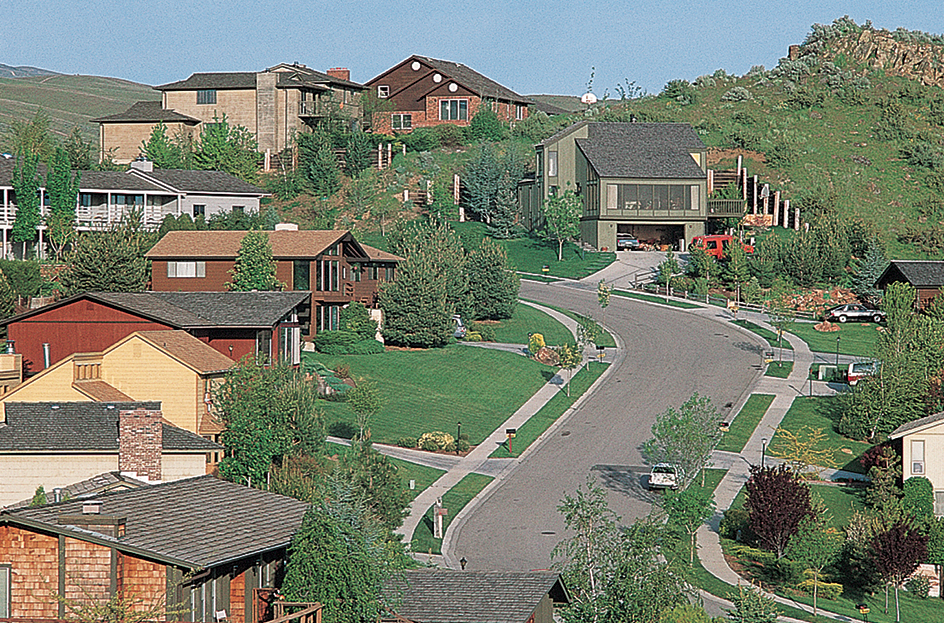Suburb is a community next to or near a central city. Each central city and its suburbs form a continuous metropolitan area. In the early 2000’s, about half of all Americans lived in suburbs.
People dwell in suburbs for various reasons. Many families seek a house and a yard and freedom from overcrowded, declining city neighborhoods. Others believe their children will get a better education in the suburbs. Still others move to escape the crime, pollution, and other problems of the central city.
Characteristics of suburbs.
Most suburbanites live in single-family houses, though the number of town houses and apartment dwellings has increased rapidly since 1980. Many suburbs each consist of people with similar social characteristics, incomes, and lifestyles. Some suburbs serve as retirement communities.

In the suburbs, homes, workplaces, and shopping centers are spread over greater distances than in central cities. For this reason, most suburbanites consider automobiles essential to daily life. In the past, a majority of suburban residents traveled regularly to the central city to work or for recreational or cultural activities. But today, most suburbanites work and seek entertainment in the suburbs.
Most suburbs in the United States have their own governments, with a mayor or city manager, a council, and such municipal services as police and fire protection. County officials directly govern other suburbs.
Growth of the suburbs.
Extensive suburban growth in the United States began in the late 1800’s with the development of streetcar lines and railroads. People could live in the “country” and ride the trolley or train to their jobs in the city. During the 1950’s and 1960’s, general prosperity increased the move to the suburbs, as more and more families became able to buy one or two automobiles.

Since 1960, U.S. suburbs have experienced massive growth in nonresidential activities. By the 1990’s, so many shopping malls, office complexes, and industrial parks had been built in suburban areas that the suburbs passed the central cities in total number of jobs. The most notable growth has been concentrated near expressways, especially where these highways intersect. At such locations, suburban downtowns, or edge cities, have developed. Today, the suburban ring can itself be regarded as an outer city, which increasingly dominates the social and economic life of the metropolitan area.
The rapid growth of suburbs has created many problems. Numerous suburbs have had difficulty raising enough money for such basic services as police and fire protection. Residents often engage in disputes over the quality of the community’s schools and the amount of taxes needed to support them. Especially in older suburbs, population change may produce friction between ethnic groups. Many suburbs now face the crime, congestion, and other problems that some residents sought to escape by leaving the central cities.
